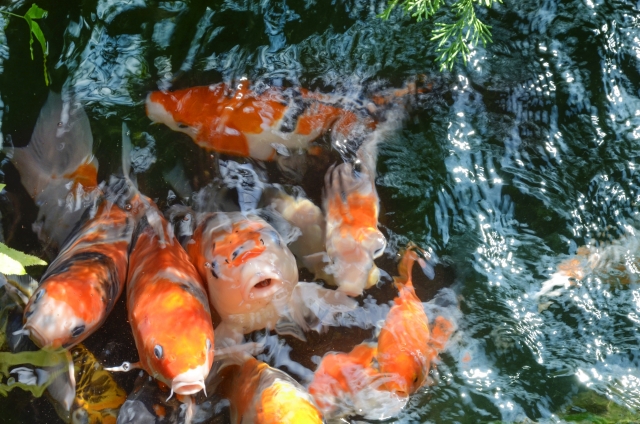I’ve seldom written about photography so far. So here, I’d like to discuss about the relation between Japanography and photography. With photos I took today for a hike to Umi-no-nakamichi, since the beautiful weather was so enticing.
写真についての記事はこれまで殆ど書いてきていないので、今日は初夏の日差しに誘われて、海の中道海浜公園へハイキングをして撮って来た写真を交えながら、ジャパノグラフィーと写真の関係性を書いてみたいと思います。

Above all, Japanography is solo assignment. In the express activity of ‘writing and lecturing Japanese culture in English and Japanese bilingual’, one has duty as scriptwriter, director, lecturer, photographer, coordinator, translator, producer, negotiator and accountant, all in one.
まず初めに、ジャパノグラフィーは一人活動を基軸とするものであるので、「日本文化を日本語と英語の二か国語で綴り講義する」と言う表現活動において、自分一人が脚本家、演出家、講師、写真家、調整役、翻訳家、監督、交渉人、会計責任者、の全てを担います。

One must propose a plan, gather up materials, compose the structure, write, translate, edit, think of picture layout, collect info, do networking, and go fieldwork. Same as many of YouTubers and bloggers, the media of Japanography is artistic and educational activity constructed by pouring out all imagination, intellect, and action one can have.
企画立案をして、ネタ集めをし、文章の構成を考え、執筆と翻訳と編集をし、写真の配置を考え、情報を集め、人脈作りに励み、現地調査へ出かけて行きます。多くのYouTuber やブロガーと同じく、ジャパノグラフィーというマイメディアは、自分という人間が持てる着想力と知力と行動力の全てを注ぎ出して作る、芸術活動であり教育活動なのです。

I’ve been piling up painstaking efforts day after day, in order to elevate the solo expressive activity into expansive universal academic genre. It took long manga and anime to be recognized as art, and it’s essential to have rigorous self inspection as a professional when sublimating personal blog into objective academic output.
その個人としての表現活動を、広く普遍性を持たせた一つの学問にするべく、奮闘努力の日々を重ねて来ました。漫画やアニメが芸術として認められるには時間がかかりましたが、個人のブログ活動を学問という客観性を要する営みへと昇華させる為には、プロフェッショナルとしての厳しい自己点検は必須のもの。

Though, something plainly solid and firm is not attractive enough. ‘The Pillow Book’ is the source of inspiration, and Lady Sei Shonagon wrote essays with exquisite flares and sparkles, they were kaleidoscopic and her esprit was fragrant. I dream of creating a world like Lady Sei’s. If the working is not stimulating intellectual curiosity for both reader and maker, lifeline of Japanography will perish.
しかしそうは言っても、ただ固いだけのものは詰まらない。『枕草子』をジャパノグラフィーの着想の元としているからには、清少納言が書き表した様な、伸びやかで煌めきがあり、変幻自在でエスプリの香りが立ち昇るものを作りたい。そんな世界観を出して行きたい。けれど受け手も作り手も知的好奇心を刺激される営みでなければ、その生命線は失われてしまう。

It won’t reach out to the stage of academic genre that people are inevitably attracted with magnetic charm, if this expressive activity is not dynamic nor vital with heartbeat.
この表現活動に躍動感があり、そのものが生き生きと脈打っていなければ、多くの人々の心をくすぐり、是非とも挑戦してみたいと駆り立てられる学問という高みへは到達出来ない。

Thus, it’s consequential to use photographs that one actually took by oneself. It’s indispensable to use photos of your own. Or it’s fine to use pics taken by someone you went together. But one must be at the spot physically.
そこで、自分が撮って来た写真を使うことが意味をもってくるのです。必ず、自分が撮ったものを使うこと、或いは一緒に行った人に撮ってもらったものでもいいけれど、その場所に自分が実際身を置いたということが大切。

Because I consider if the experience is not embodied as of one’s own, it turns to be a lie. However, photography tells a lie. Since picture doesn’t reflect truth, but photographer can choose a viewpoint, and the picture is one aspect of truth that is cut out by the photographer.
我が事として血肉化された経験でなければ、嘘になってしまうと考えるからです。しかし、一方で写真は嘘をつきます。真実を写すのが写真ではなく、写す者が対象を見る視点を選べるものであり、写真とは写す者が切り取った真実の一つの側面であるからです。

One can add up dramatic effects since the moment is cut out partially, and sense of hearing, smelling, touching, tasting aren’t included.
その場所の一部を視覚的に切り取ったものであるので、聴覚、嗅覚、触覚、味覚の情報は入らず、いかにもな演出をすることが可能であるからです。

Hence, it’s a skill of editing what picture to take and use. And in Japanography, the editing proficiency of how to compose a world view with original story is led to be one’s ingenuity in the process of making it into individual creative activity.
つまり写真を撮り、どの写真をどう使うかということは編集力なのです。そしてジャパノグラフィーにおいて、どの様な物語性を持たせて世界観を構築するかという編集力は、ジャパノグラフィーを個人の創作活動として行く段階において、それぞれの独自性という持ち味になります。

When taking pictures, my attention goes to whole proportion and colors. Yet there is no right answer since it’s dependent on each one’s preference. For generations who were born when smart phone already existed, they might not share this feeling of taking a picture meticulously. But photographs of young people are interesting as well.
私は構図重視および色彩重視で写真を撮りますが、写真はあくまでの個人の好みなので、そこに正解はありません。生まれた時からスマホがあった世代にとっては、一枚一枚を大事に撮るという感覚はないかもしれない。けれど、そんな若い世代が撮る写真もまた面白いものがあります。

There’s academic truth in the field of the humanities; the reverse is also true. There’s no absolute answer nor result and vice versa is the eternal theme. One takes a picture and thinks about how to give effects by editing. And layering own story like a kaleidoscope, adjusting light angle and beautifying the target is one of the facets of Japanography.
人文科学における学問の真理として、そうであり、またそうではない、というものがあります。絶対的な解というものは存在しない。逆もまた真なり、というものは永遠のテーマでもありますが、写真を撮る自分があり、それをどの様に見せようかと編集して演出している自分がいる。そしてその物語を万華鏡の様に、光の角度を変えつつ重ね合わせ紡いでゆくことが、ジャパノグラフィーの一つの切り口なのです。
Parrots, flowers, flamingos, and a donkey standing still seemed reflecting upon himself. They were all so Kawaii.
鸚鵡も、お花も、フラミンゴも、何やら一人反省している風貌のロバ君も、みんな可愛い一日でした。
Love and Peace.






















